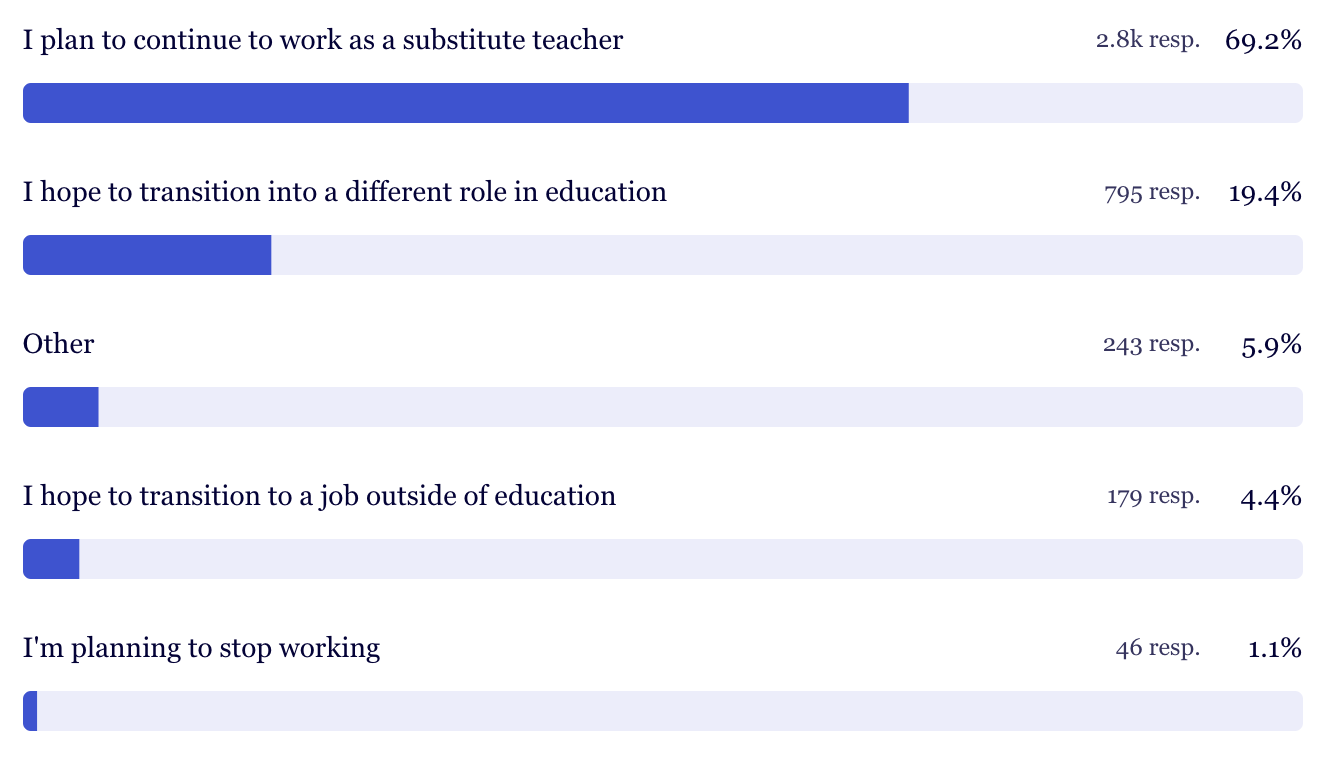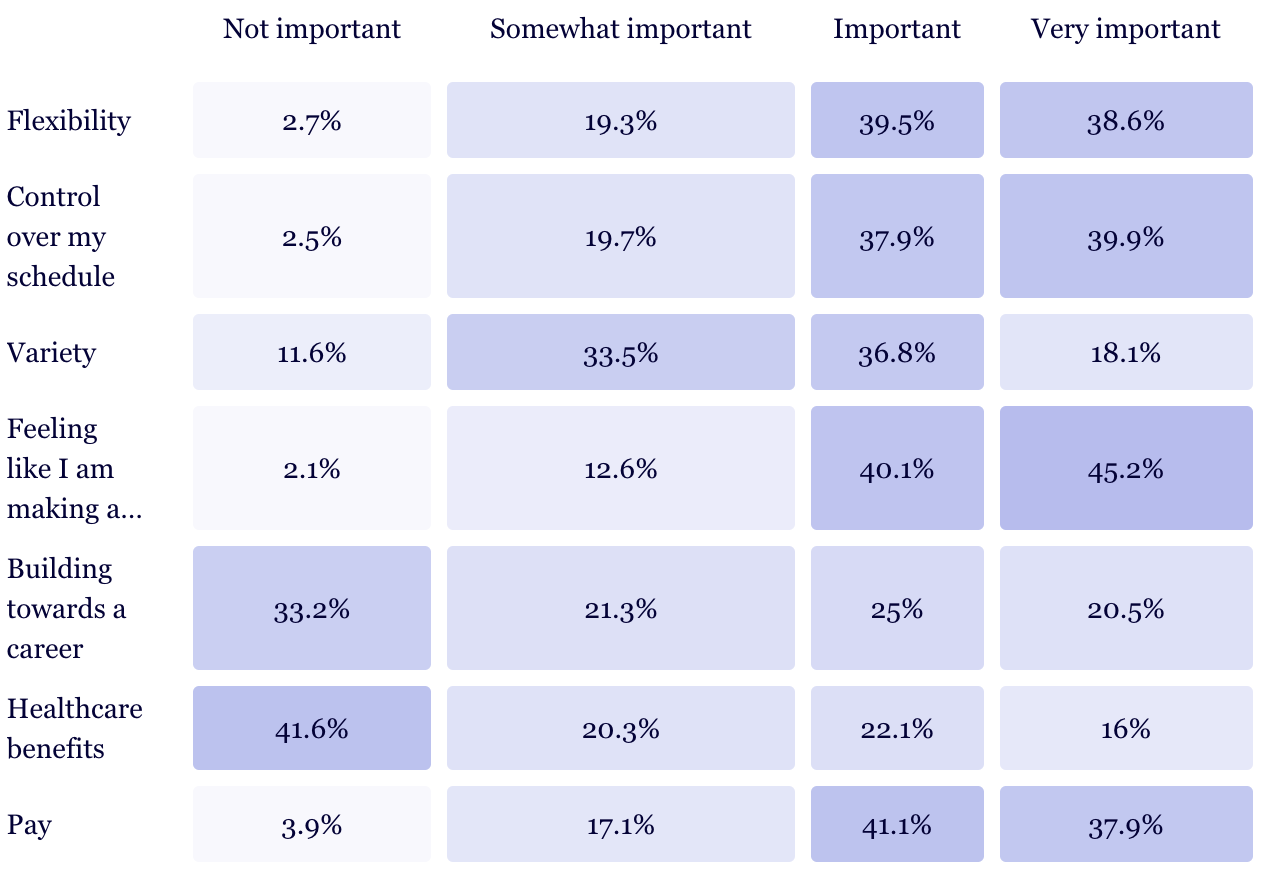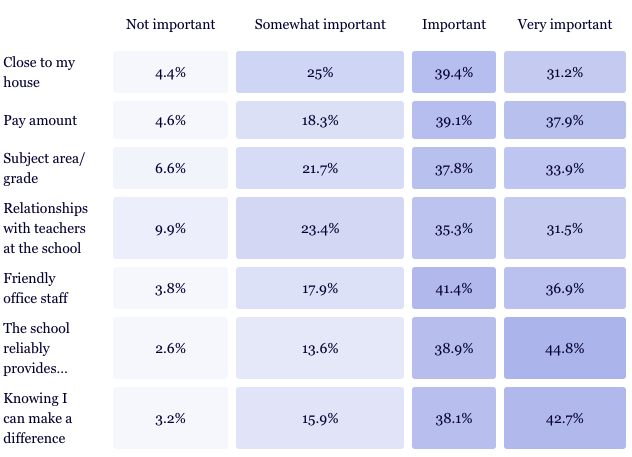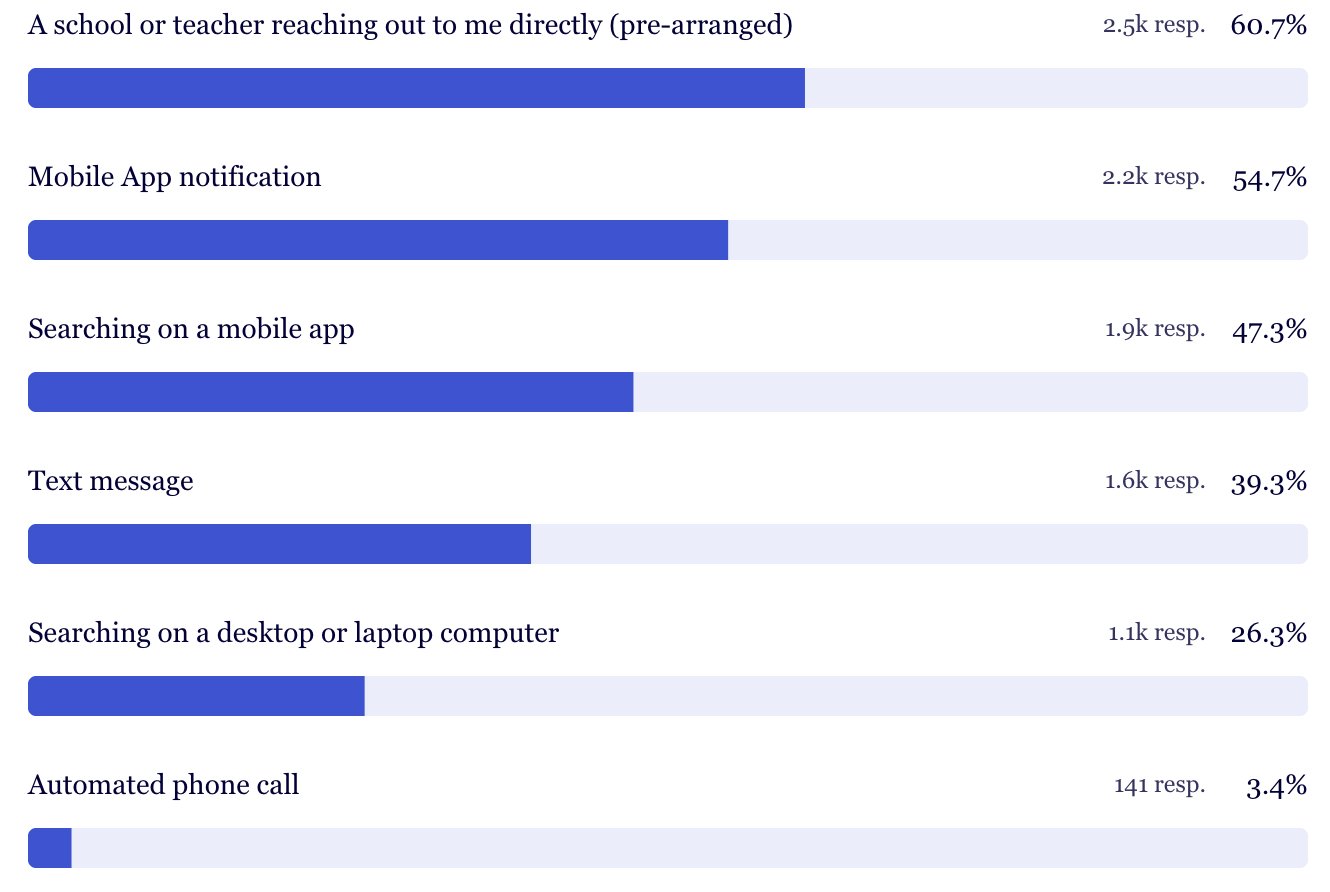- Products
-
About
- Resources
- Contact Us
June 28, 2022 • Insights

Molding the minds of the next generation is a tall order, and it’s been gradually harder to do in recent years with fewer educators to lead the charge. The K-12 teacher shortage is not new, but it is compounded by various factors. Fewer college students are majoring in education, reducing the pool of new talent. And on top of this, COVID-19 forced districts to recall retirees and even rely on the National Guard for classroom coverage.
The need for teachers has never been greater, opening the door to increased opportunities for substitutes. But to effectively attract and retain these on-demand educators, you need to deploy strategic substitute management.
Last year, Red Rover heard from more than 800 subs, learning how they work and the best ways to support them. After getting such valuable insights, we revamped and repeated our effort this year, collecting responses from 4,095 substitute teachers to help school districts understand modern subs’ motivations and behaviors. Check out our biggest findings to get a better handle on how your school district can understand and attract substitute teachers and increase fill rates.
Labor shortages are impacting every industry today, including education. This puts a crunch on the educational system and the potential of the next generation. Luckily, despite a substitute teacher shortage, most subs still plan to continue in the field in the next school year. More than 69 percent say they’re in it for the long haul and will be back for new opportunities next year.
So what keeps dedicated subs coming back for more? Communication and a sense of belonging—whether you give them frequent opportunities to provide feedback or prepare them with the right information—lead to higher retention and fill rates. Pair this with efficient and ongoing training from either your staff or substitute training programs, and you build loyalty.

Subs want a sense that their personal needs are being fulfilled, which outranks any traditional job benefits. That’s why feeling like they’re making a difference for kids is essential for attracting and retaining more than 45 percent of substitute teachers. Schedule control, pay, career growth, and flexibility are important but play second fiddle to answering a greater calling.
Of course, a little bit of appreciation goes a long way toward attracting substitutes too. Providing support and resources contributes to positive substitute management and sets subs up for success. And to further show your thanks, why not offer access to free professional development opportunities?

K-12 subs need support because they’re almost always the “new kids'' in the classroom. Substitute teachers look for a number of things when they assess job opportunities, with nearly 45 percent giving a thumbs-up to schools that provide practical information, such as classroom and campus details.
There’s nothing worse than going in blind, unaware of what the class is supposed to be learning, much less how to find the classroom to begin with. With the right technology, you can provide everything from lesson plans to school-specific information to prepare substitutes.
What’s more, when you upgrade from old-fashioned methods to a mobile-friendly system, you meet subs where they are. Software makes it easier for substitutes to obtain information with text alerts, boosting your fill rates.

You have to be nimble to be a substitute—both in the classroom and in your approach to securing assignments. Subs today are "gig workers," and they do have to do some digging to find the right opportunities. But a whopping 60.7 percent of subs prefer to get assignments directly from permanent teachers who reach out to them. And if they aren’t getting assignments this way, they’re turning to text alerts instead. But robocalling? Not such a hot option when Americans already get an average of 28 spam calls a month.
The phone rings at 5 a.m. It’s an automated sub call. Click. Only 3 percent of substitute teachers respond to automated calls, and schools need to match assignment alerts to preferred communication methods. Text messages and mobile notifications win by more than 4-to-1, and by communicating the right way, you’ll increase your district’s fill rates.

Want more insights into substitute management and mitigating the effects of teacher shortages? Download our guide, Combating the Substitute Teacher Shortage with Strategic Substitute Management, and keep your eyes on our blog for key updates!
Subscribe to get the latest Red Rover news and insights delivered straight to your inbox.